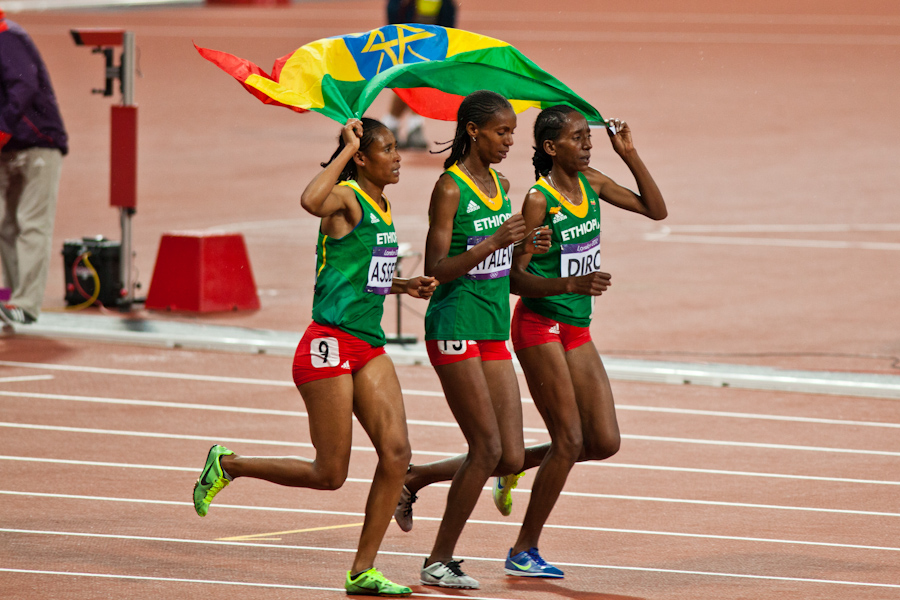History and Evolution of Ethiopian Steeplechase

The dominance of Ethiopian athletes in the steeplechase is a relatively recent phenomenon, emerging in the late 20th century and reaching its peak in the 21st century. This dominance is not merely a matter of chance, but rather a result of a confluence of factors, including a rich athletic tradition, dedicated training programs, and a unique physical advantage.
Origins of Steeplechase Running in Ethiopia, Ethiopian steeplechase
The origins of steeplechase running in Ethiopia can be traced back to the early days of organized athletics in the country. The first Ethiopian to compete in the steeplechase at an international level was Abebe Bikila, the legendary marathon runner who won the Olympic gold medal in Rome in 1960. Bikila’s success inspired a generation of Ethiopian athletes, including the first Ethiopian steeplechaser to achieve international recognition, Getaneh Tessema.
Key Figures and Events Shaping Ethiopian Steeplechase Dominance
The rise of Ethiopian steeplechase dominance is marked by the contributions of several key figures and events. Getaneh Tessema, who won the bronze medal at the 1999 World Championships, was a pioneer who paved the way for future generations. The emergence of Kenenisa Bekele, the legendary long-distance runner, as a world-class steeplechaser in the early 2000s, was a significant turning point. Bekele’s victories in the 2004 Olympic Games and the 2005 World Championships established Ethiopia as a dominant force in the steeplechase. The subsequent success of athletes like Saif Saaeed Shaheen, who won the 2003 World Championships and the 2004 Olympic Games, further cemented Ethiopia’s position.
Timeline of Significant Achievements and Records in Ethiopian Steeplechase
- 1999: Getaneh Tessema wins bronze at the World Championships, marking the beginning of Ethiopian dominance in the steeplechase.
- 2004: Kenenisa Bekele wins gold at the Olympic Games in Athens, solidifying Ethiopia’s position as a force in the steeplechase.
- 2005: Bekele wins gold at the World Championships in Helsinki, further establishing Ethiopia’s dominance.
- 2008: Bekele sets the world record in the steeplechase, with a time of 7:53.63, a record that stands today.
- 2012: Ezekiel Kemboi wins gold at the Olympic Games in London, continuing Ethiopia’s success.
- 2016: Conseslus Kipruto wins gold at the Olympic Games in Rio de Janeiro, showcasing the continued strength of Ethiopian steeplechase runners.
Evolution of Ethiopian Steeplechase Compared to Other Nations
Ethiopia’s dominance in the steeplechase has not gone unnoticed by other nations. Kenya, traditionally a strong force in distance running, has made significant strides in the steeplechase in recent years, with athletes like Ezekiel Kemboi and Conseslus Kipruto achieving remarkable success. The rivalry between Ethiopia and Kenya has been a major factor in the evolution of the steeplechase, pushing both nations to new heights.
The Ethiopian steeplechase legacy is one of unmatched dominance, a story etched in sweat, grit, and a relentless pursuit of victory. The rhythmic pounding of feet against the track, the thunderous splash of water in the barrier, and the triumphant roar of the crowd – it’s all part of the mesmerizing spectacle that is the Ethiopian steeplechase.
To truly understand this unique blend of athleticism and strategy, dive deeper into the world of ethiopia steeplechase , where legends are born and records are shattered.
The Ethiopian steeplechase is a spectacle of grit and endurance, a testament to the human spirit’s ability to overcome seemingly insurmountable obstacles. Just as a runner navigates the water jump, their focus unwavering, so too does the craftsman who meticulously transforms a worn baseball mitt into a leather baseball mitt chair , imbuing it with a history and character that transcends its former purpose.
This unexpected transformation echoes the athlete’s journey, highlighting the beauty that can emerge from both the physical and the creative struggle.
